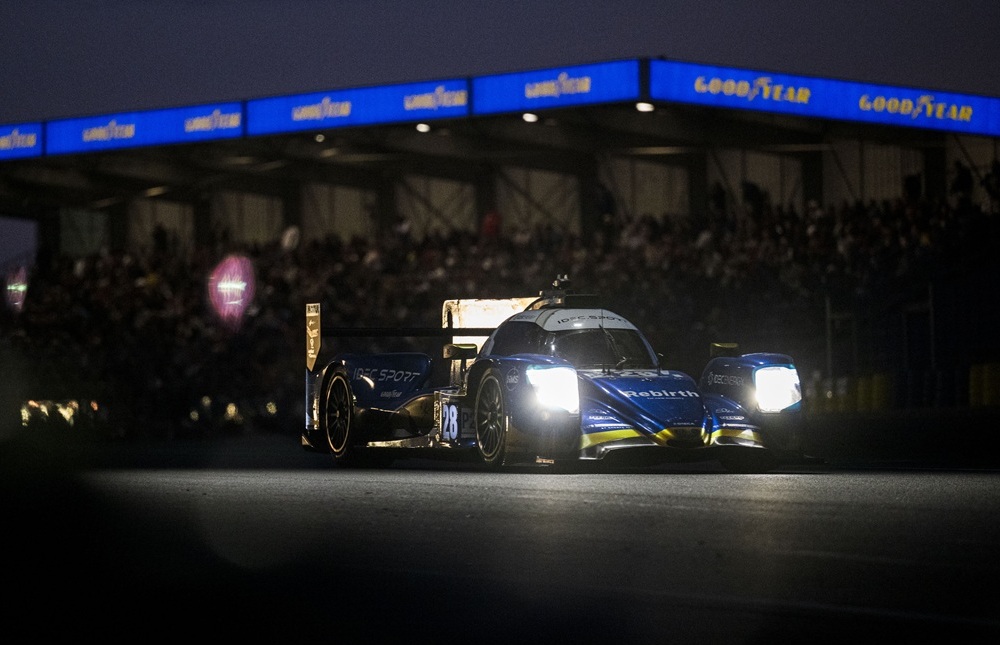
Next-gen LMP2 is back in the spotlight, as the tender process for the chassis and powertrain comes to a close for the new-look regulations, which are set to be in place between 2028 and 2032.
We are just weeks away from finding out what the category will look like at the end of the decade, with the results of the tender processes set to be revealed during the week of the Le Mans 24 Hours next month. In the meantime, there are plenty of question marks and talking points to explore, as the prospective suppliers race to put together and submit their bids.
Start ing with the chassis tender, key sources have revealed that there is little to no carryover from previous design concepts from the four current LMP2 manufacturers (Dallara, Ligier, Multimatic and ORECA) for the previously proposed ruleset that was scrapped last June.
The new chassis, which are expected to cost around 450,000 Euros ($507,000) each before spares, are set to be designed to a set of dimensions that will make them slightly longer, wider and heavier than the current ORECA 07s competing around the world to the current ruleset which debuted back in 2017.
Digging deeper, there are some specific areas that have raised eyebrows, notably the request for a central driving position. This, according to a source from a current supplier, was a surprise, “going against the two-seat philosophy that has been the foundation of sports cars for decades.” It was, though, according to another key source, not entirely out of the blue, as it was apparently discussed when the ill-fated 2026 rules were being drawn up.
It’s an aspect of the technical specifications in the tender that will challenge designers but is far from a showstopper. Safety is at the core of this change, handing the driver greater protection on the left side upon impact.
The concerns that remain center around the makeup of the cockpit’s layout, and the placement of the various bits of paraphernalia it will house. Currently, the passenger side of the current cars is littered with wires and components. Will pit stops become tougher to orchestrate, with the clear potential for drivers climbing in and out, damaging or interfering with the sophisticated electronics the cars will carry? New solutions are required.
There’s another clear message at the core of this change, and that is a complete severance of the regulations’ ties to LMDh prototypes and the spines which serve as the foundation for the cars we see in large numbers in Hypercar and GTP.
This is not a surprise. When the previous draft of the LMP2 rules were canned, it was made clear that the next regulations would not feature chassis based on LMDh spines — as was originally intended. Instead, with a central driving position, the chassis is going to be entirely bespoke.
This completely rules out any prospect of private teams with LMP2 cars being able to convert their prototypes into an LMDh down the line. It does, however, open the door for other suppliers to make bids and get involved.
The formula will be a closed shop when the rules debut, as the maximum number of successful tenders has been reduced from the current four to “a maximum of two.” But there is now potential for an outsider to become a key player overnight.
What’s ideal? Competition or an entirely spec formula? It’s a conversation that’s been taking place in both the European Le Mans Series and IMSA SportsCar Championship paddocks since the tender process began.
On one hand, competition spreads the risk from the organizer side and commercial opportunities across two organizations. On the other, selecting the “correct” chassis may prove to be paramount again for teams, who will need to invest significant six-figure sums to go racing and in the current marketplace can ill-afford to make the wrong choice.
Cast your mind back to the early days of the current era, and the challenge that a team like United Autosports faced, when it felt it needed to decouple from Ligier and switch to ORECA once it became clear that the 07 was the most desirable of the four chassis.
“It’s going to be extremely tough,” an LMP2 team owner from the ELMS paddock told RACER. “We’re looking at spending around a million Euros per car if you include spares, and the bigger teams will be looking to buy spare cars and test cars too. That’s before you get into the game of musical chairs for grid spaces. I certainly wouldn’t want to find out we’d spent millions on cars th at nobody wants to drive by mid-season in 2028.”
Before looking more into cost, let’s ponder which suppliers are looking at it.
Of the current four, Ligier, ORECA and Dallara have all confirmed that they are bidding. RACER did reach out to Multimatic multiple times, but received no response.
From the LMP3 sphere, Ginetta and Duqueine have made it clear they have no plans to enter the marketplace. ADESS, meanwhile, says an LMP2 project is “still on the table,” though it remains to be seen if it will decide to submit a bid.
An option from left field, meanwhile, such as Dome, Wolf, Nova, Tatuus or Lola isn’t by any means impossible, but the feeling is that it’s perhaps improbable.
Within the three current P2 suppliers that have confirmed their pitches, there are differing opinions regarding the number of successful suppliers that should be chosen. The big question is whether or not splitting the estimated 40-unit pie two ways is sustainable.
One was adamant there was still plenty of money to be made if you split the customer base down the middle. Though it acknowledged how damaging it would be to complete all the design work, produce an initial batch of cars, only to find it was off the pace and therefore dismissed by most, if not all, the interested teams.